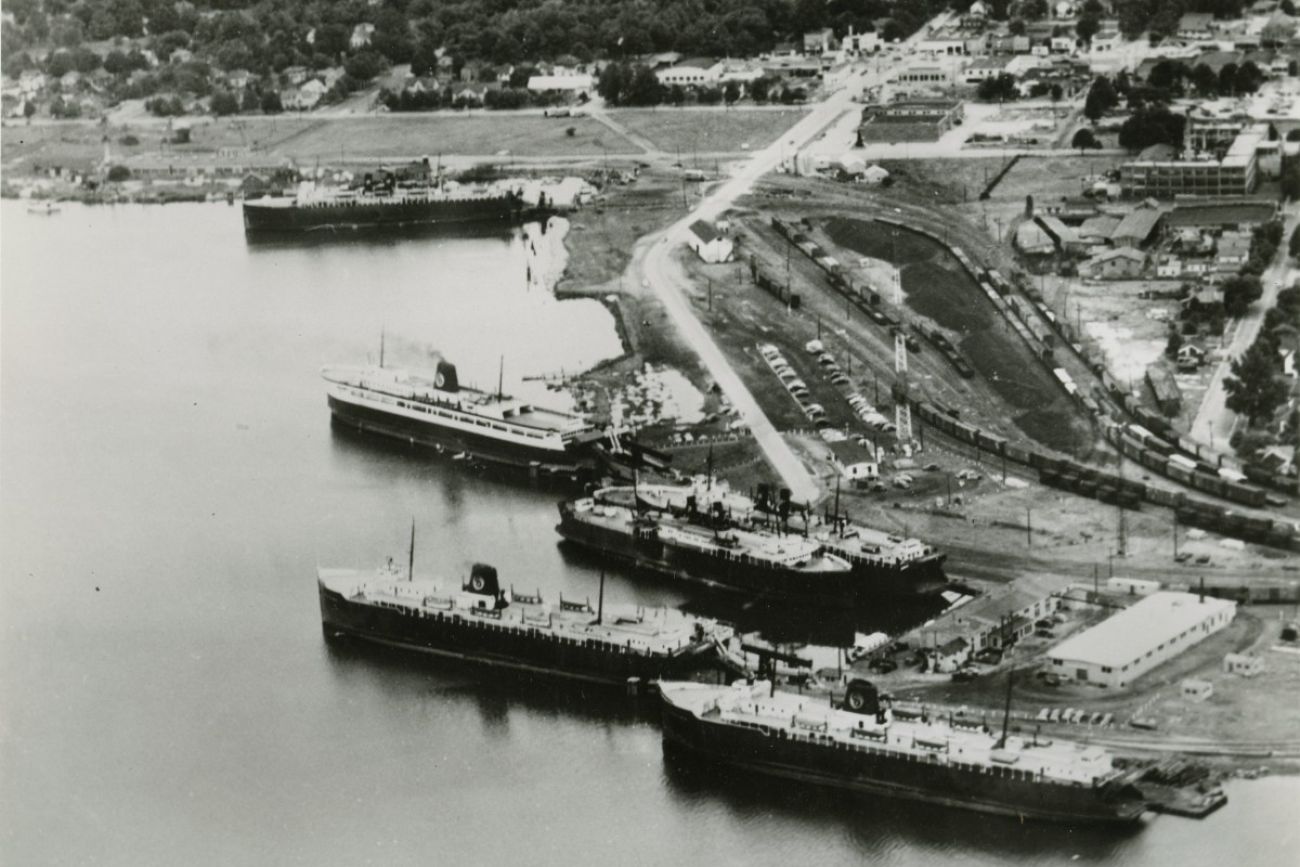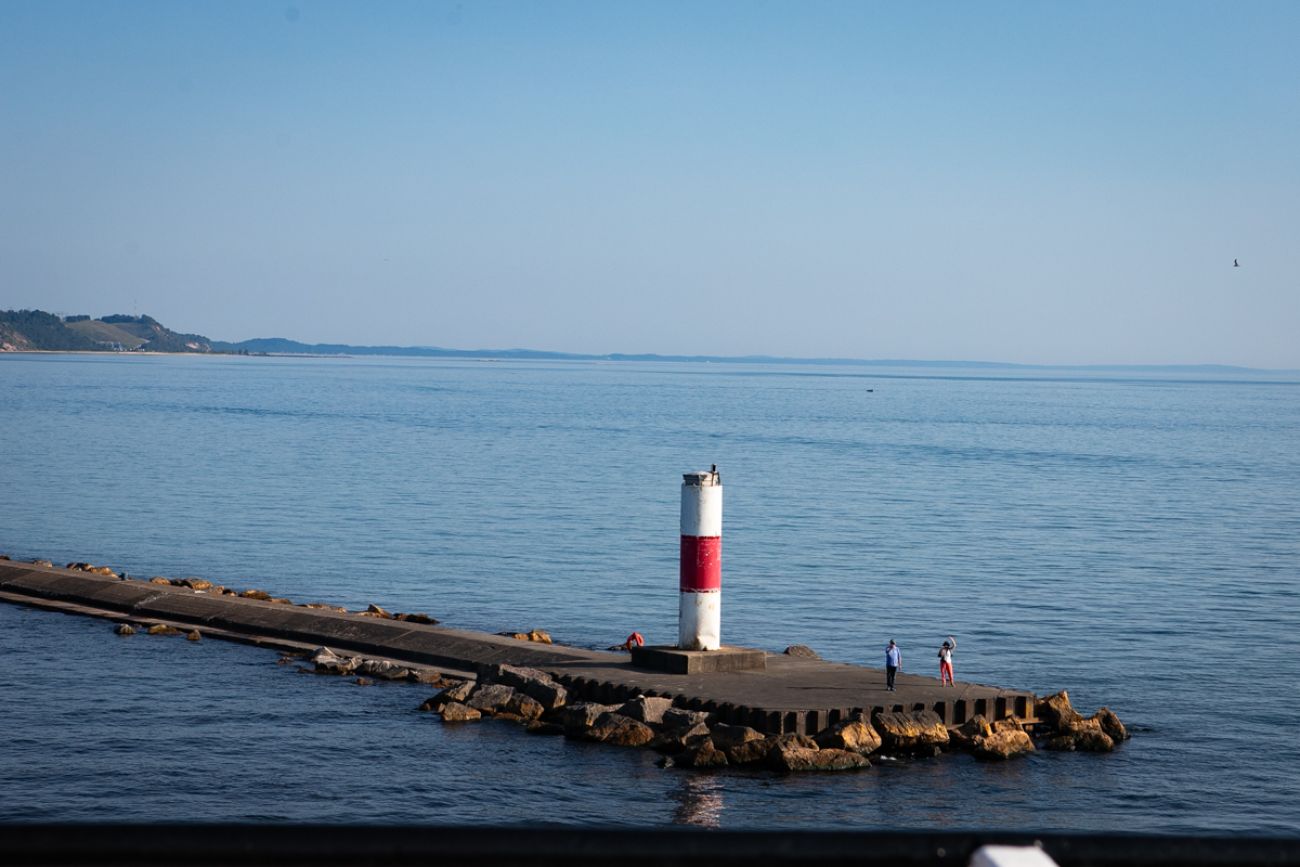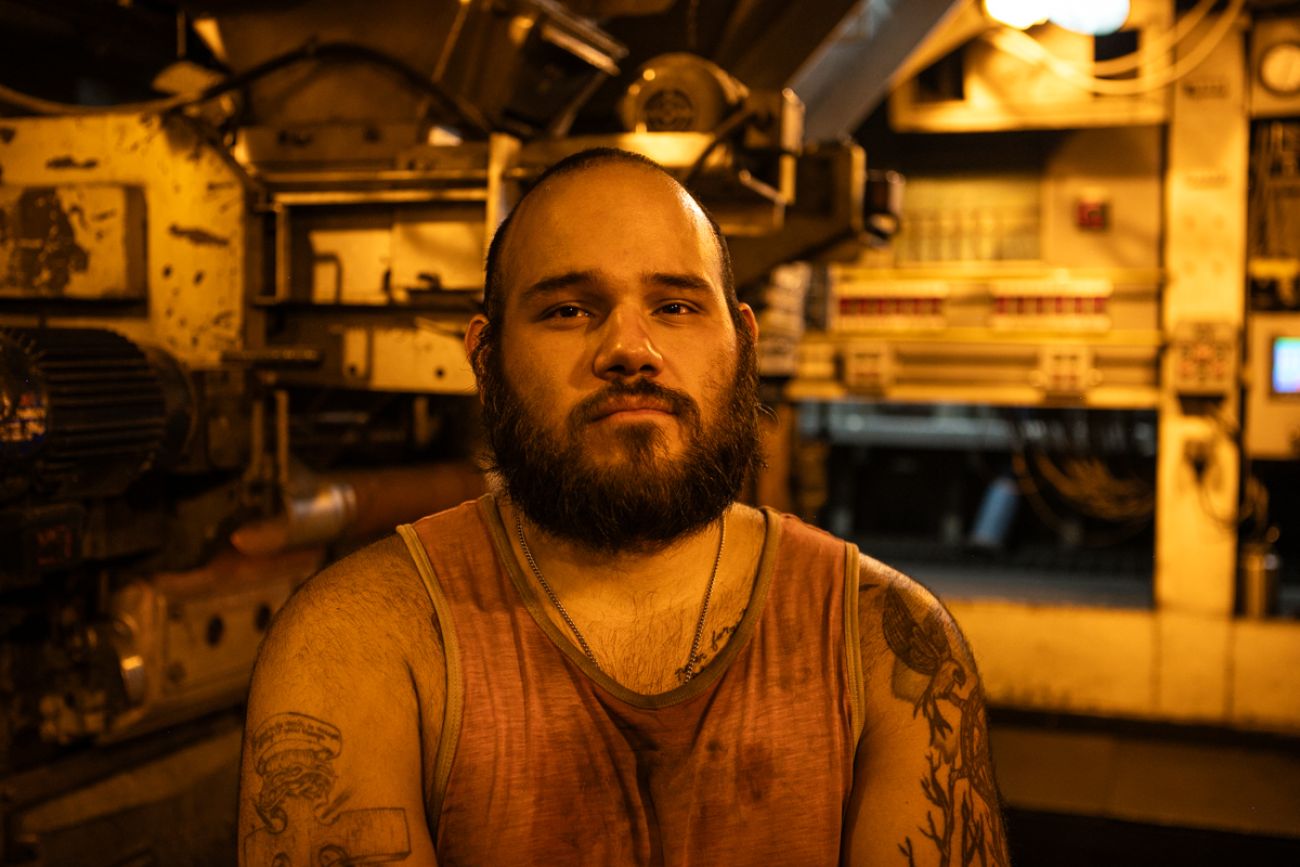
By Kelly House
The Great Lakes News Collaborative includes Bridge Michigan; Circle of Blue; Great Lakes Now at Detroit Public Television; Michigan Public, Michigan’s NPR News Leader; and who work together to bring audiences news and information about the impact of climate change, pollution, and aging infrastructure on the Great Lakes and drinking water. This independent journalism is supported by the Charles Stewart Mott Foundation. Find all the work HERE.
- As the nation’s last coal-fired steamship, the SS Badger has long been a source of both wonder — and controversy
- Now, the Badger’s new owners hope to transition the ship from coal to an emissions-free energy source
- Options abound, from hydrogen to batteries. But as always, money poses a barrier
LUDINGTON — Nearly every summer day for decades running, the SS Badger steamship has transported hundreds of passengers across Lake Michigan in vintage splendor.
On the open deck, sunbathers lounge with drinks in hand. Inside, families play bingo, watch movies or enjoy hot dogs, popcorn and live music while traveling between Manitowoc, Wisconsin, and Ludington at a leisurely pace of 18 miles per hour.
And overhead, black soot billows from the 72-year-old ship’s smokestack, while workers sweep up coal ash in a sweltering boiler room below deck.
As the last coal-fired steamship in the country, the SS Badger is both a cherished symbol of the Great Lakes’ maritime heyday and a stubborn vestige of its polluted industrial past.
Now, its owners hope to make it a trailblazer of the clean energy future.
Interlake Maritime Services, an Ohio-based company that bought the Badger in 2020, is studying ways to convert it to emissions-free energy. By 2026, company officials hope to have a blueprint for replacing the coal-fired system with something far better for the environment.
That system, “has stood the test of time, and it will stand the test of time,” said Mark Barker, Interlake’s president. “But at the same time, looking at where the world’s going, at the end of the day, coal is not the cleanest fuel.”
History of a ship
The Badger wasn’t always a tourist vessel.
Built in 1952, it spent four decades ferrying railcars between Michigan and Wisconsin for the Chesapeake & Ohio Railway Co. — a shortcut that avoided Chicago’s overcrowded railyards.

The Ludington harbor is pictured in 1952, just before the SS Badger went into service in the heyday of the Great Lakes railcar ferry industry. Every ship pictured is a car ferry. (Photo courtesy of the Mason County Historical Society)
At the time, the 410-foot Badger was the biggest ship in a car-ferry fleet that numbered seven in Ludington alone. And from the moment it was built, its coal-fired boilers were outdated.
By the 1950s, other ships were already transitioning to oil. The C&O Railway chose coal for the Badger because it was already burning and transporting coal on its rails.
“The coal burning has, in many ways, been to the Badger’s detriment since day one,” said Nathan Wietrzykowski at the Port of Ludington Maritime Museum.
Yet despite its antiquated energy system, the Badger outlasted all of its contemporaries.
By the 1980s, railroad advancements made it easier to transport freight around the lake, rendering railcar ferries obsolete. While other railcar ferries vanished, the Badger found new work shuttling tourists, automobiles and commercial trucks.
Today, it’s the only car ferry still navigating the Great Lakes — and the last coal-fired steamship in the nation.
Fans of the ship marvel at the antique technology, the leisurely ride (the Badger takes four hours to travel 60 miles across the lake) and the onboard bingo games that have survived the advent of wireless internet and satellite television.
People view it as “a last defiant relic of a past era,” said Wietrzykowski.
And in Ludington, it’s both a point of pride and an economic driver. Downtown restaurants plan for “the Badger rush” when the ship docks at 7 p.m. Residents gather on front lawns and fishing piers to greet it.

Onlookers gather on a pier in Ludington, Michigan, to watch the Badger complete its 60-mile journey across Lake Michigan. (Bridge photo by Asha Lewis)
For some passengers, the coal is part of the appeal.
“It’s a throwback,” similar to riding on a steam locomotive, said 72-year-old Mark Bielski of Chanhassen, Minnesota. “I like the simplicity.”
But the ship’s fuel source has long been a source of conflict.
It takes so much effort to get the boilers going, they stay on even when the Badger is docked. The smoke plume contains planet-heating greenhouse gases along with particulate matter, sulfur dioxide and other pollutants.
Decades ago, the city of Milwaukee battled the Badger over its air emissions. More recently, the ship’s former owners spent years sparring with environmentalists and the EPA over the million pounds of coal ash it dumped in Lake Michigan every summer.
Following a 2013 consent decree, the ash is now captured in containment bins instead.
“The ultimate solution, of course, was to stop burning coal,” said Howard Learner, executive director of the Chicago-based Environmental Law & Policy Center, but “the prior management was just stubborn in its refusal.”
In the years since, many things have changed.
Climate change has been getting worse. Michigan has passed laws to shift the state toward clean energy, and public concern over fossil fuel pollution has intensified.
And the Badger has gained new owners with a different philosophy.
Interlake employs an environmental stewardship manager, and has been working to reduce the carbon footprint of its entire 12-vessel fleet.
“Obviously, decarbonizing is hard to talk about, with the elephant in the room being a coal-fired ferry,” said Katie Wells, Interlake’s manager of environmental stewardship and quality.
It won’t be easy
On modern diesel ships, it’s relatively easy to install scrubbers that strip pollutants out of the exhaust. Decarbonizing the Badger will be more difficult.
“It’s so distinctly different from a modern platform,” Wells said. “There really is not a way to just up and change from coal to diesel.”
Walking into the Badger’s engine and boiler rooms feels like walking back in time. It’s loud, hot, and sooty.
Unlike modern ships that are highly automated, the Badger’s energy system requires a full staff: In the boiler room, a fireman and a coal passer tend to the fires, sweep up ash and maintain machinery that superheats steam to power the ship’s two hulking engines, which are nearly three stories tall. Three more workers keep watch in the engine room.

Beto Ramirez works as a fireman on the SS Badger, responsible for tending to the four coal-fired boilers located in the belly of the ship. (Bridge photo by Asha Lewis)
A chief engineer oversees it all.
“There’s a lot of pride in doing what we do, and keeping the traditions and history alive,” said Chief Engineer Andy VerVelde. “Everybody works as a team. We suffer in the heat together. We troubleshoot the problems together. We overcome the challenges and keep the boat going.”
Ships in the Great Lakes and St. Lawrence Seaway (which connects the lakes to the Atlantic Ocean) emitted 1.6 million tons of carbon dioxide in 2021. That’s roughly as much as 350,000 passenger vehicles.
But international, national and state regulators are pushing the industry to become emissions-free by 2050.
Companies are exploring everything from alternative fuels like hydrogen and biofuels to new powering systems like fuel cells, batteries and modern wind power that looks nothing like a traditional sailboat.
But greening the maritime sector setting isn’t as easy as, say, switching to electric cars.
For one thing, ships are far bigger. They often must travel long distances between refueling. And in the Badger’s case, it needs power not just for propulsion, but for keeping the burger grills hot, the stateroom lights on and the toilets flushing.
“Every service aboard the ship ultimately comes from the steam plant,” VerVelde said. “The lights, the drinking water, the everything.”

Passengers gaze toward Ludington during a recent crossing from Manitowoc, Wisconsin to Ludington, Michigan on the SS Badger. (Bridge photo by Asha Lewis)
A testbed for a greener maritime sector?
The first step toward a greener Badger is figuring out what’s possible. A $600,000 grant from the U.S. Department of Transportation is funding the study, which should be complete by mid-2026.
Barker, the Interlake president, envisions turning the Badger into a testing grounds for greener technologies that could be deployed industrywide.
Ideas include powering the ship with diesel, methanol, hydrogen, fuel cells or even batteries powered by onshore electricity. The company is also looking into carbon capture systems that could zero out emissions if the ship continues to run on fossil fuels.
In some ways, the Badger is a natural candidate for experimentation. Its fixed, relatively short 60-mile route makes electrification more realistic, because the Badger could theoretically recharge a battery during daily trips to the dock.
On the other hand, Wells said, “I can’t imagine the size of the battery you would need.”
Company officials insist they’re under no regulatory obligation to switch fuels. Cost will likely determine whether they do, and Wells said the price tag would be “several millions, at least.”
The company is hoping to secure federal funding.
The idea of a Badger without coal is bittersweet for some, said Wietrzykowski, the maritime historian and Ludington resident.
“But at the end of the day, what really matters the most is the continuation of the ship itself,” he said. “And what matters to the local economy is the continuation of the service across the lake.”
If you go…
The SS Badger
Where: Ludington to Manitowoc, Wisconsin
When: Twice daily in the summer. See a detailed schedule.
How long: 4 hours
How much: Adult one-way tickets are $88. Bringing a car adds $96. See full fare details.
For a higher-speed trip across Lake Michigan:
The Lake Express
Where: Muskegon to Milwaukee
When: Twice daily in the summer. See a detailed schedule.
How long: 2.5 hours
How much: Adult one-way tickets are $111.50. Bringing a car adds $121. See full fare details.
Catch more news at Great Lakes Now:
Maritime School Teaches Great Lakes Skills
Featured image: The SS Badger’s coal-fired system was already outdated by the time the ship was built. Yet it has remained in operation for 72 years, beloved by some and reviled by others. (Bridge photo by Asha Lewis)




